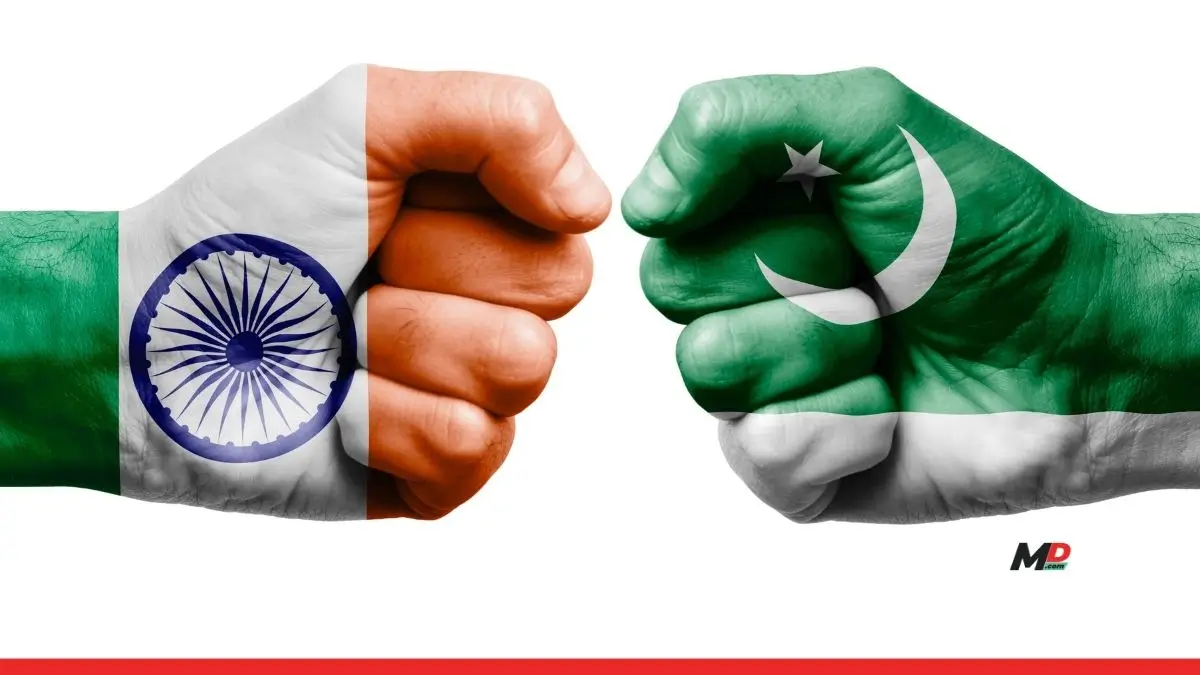Published
3 months agoon

In the wake of rising tensions between India and Pakistan following the Pahalgam terror attack and India’s prompt response through Operation Sindoor, a vital question resurfaces: Can either country really afford the devastating cost of a full-scale war?
While both nations have long lived under the shadow of cross-border hostilities, the economic consequences of an all-out conflict in today’s interconnected and financially fragile landscape are vastly different from those of previous decades. This isn’t merely about military expenditures. It’s about a chain reaction that would disrupt trade, unravel fragile financial systems, collapse stock markets, and cripple long-term economic growth—especially for Pakistan.
Estimates from the Foreign Affairs Forum suggest that even a short-term conventional war could cost India between ₹1,460 crore and ₹5,000 crore per day. That’s just the surface. The price tag for a prolonged conflict could soar to a catastrophic $17.8 billion (₹1.34 lakh crore) per day when factoring in broader macroeconomic losses.
If history is taken as a bellwether, the 2001-2002 military standoff saw India incur losses of $1.8 billion while Pakistan lost $1.2 billion. And these figures don’t even include post-conflict economic disruptions like capital flight, currency devaluation, and the collapse of bilateral trade.
India, as the world’s fifth-largest economy and the fastest-growing among major economies, possesses buffers Pakistan simply doesn’t. Pakistan’s economy, by contrast, is fragile and under severe strain. Its external debt exceeds $131 billion, with foreign exchange reserves of just $10 billion—enough to cover barely three months of imports. Without the lifeline provided by a $7 billion IMF bailout, Pakistan’s economy would have likely collapsed in 2023.
“Sustained escalation in tensions with India would likely weigh on Pakistan’s growth and hamper the government’s ongoing fiscal consolidation, setting back Pakistan’s progress in achieving macroeconomic stability,” Moody’s warned in a recent statement.
Indeed, Pakistan’s modest recovery, built on IMF assistance and debt rollovers, hangs by a thread. An armed conflict would snap it. The risks are not abstract. The Karachi Stock Exchange has already plunged 6% following India’s recent retaliatory strikes.
The indirect economic consequences of war are equally severe. Formal trade between India and Pakistan—valued at $1.2 billion annually—would halt entirely. Historical precedent offers evidence: following the Pulwama attack, Pakistan’s exports to India plummeted from $550 million to a mere $480,000. Although India’s economy is less reliant on Pakistan, the fallout from geopolitical instability would reverberate through investor confidence and capital markets.
Anand Rathi Research indicates that average market corrections in response to military conflict hover around 7%, with a median of 3%. However, past events like the Kargil War and Mumbai attacks show that Indian markets tend to recover quickly, even gaining in the medium to long term. As Abhishek Jaiswal, Fund Manager at Finavenue, puts it, “Historical data suggests that the Indian stock market has generally responded with resilience to serious geopolitical events.”
For Pakistan, however, the stock market reaction has been anything but resilient. The latest crash underscores just how exposed its economy is to external shocks, particularly those driven by military escalation.
India has also choked Pakistan’s trade through indirect channels. As one official commented, “This comprehensive ban, including indirect imports, will enable custom authorities to prevent Pakistani goods from entering India through circumvention.” Goods worth $500 million, such as dry fruits and chemicals, that previously entered India through third countries are now blocked, deepening Pakistan’s economic isolation.
Moreover, the Indian government’s suspension of the Indus Waters Treaty—a foundational agreement governing water sharing—could severely impact Pakistan’s agriculture sector, which employs 40% of its workforce. The potential loss of water resources could devastate Pakistan’s rural economy and spark internal instability.
India is also poised to challenge Pakistan’s upcoming $1.3-billion IMF loan under the climate resilience programme at the board meeting on May 9. Should this challenge succeed, it may jeopardize the disbursement of the remaining tranches of the ongoing $7-billion extended fund facility.
S&P Global Ratings has also warned that “any sustained military engagement would disrupt Pakistan’s progress in external and fiscal indicators, potentially undermining its path towards macroeconomic stability.” With international confidence already waning, further military action could restrict access to global capital markets and increase the burden of debt servicing.
The balance of economic resilience is undeniably tilted in India’s favour. India’s GDP is 10.5 times larger than Pakistan’s. Its forex reserves are 35 times higher. Even if both nations were to suffer, Pakistan would suffer exponentially more.
Yet, both sides would lose in ways that aren’t immediately quantifiable: missed growth, prolonged investor caution, and deterioration in regional peace. As one analyst notes, “Neither nation stands to benefit from extended tensions, considering their respective economic priorities.”
Wars are not fought in a vacuum. They ripple across economies, destabilize fragile systems, and inflict generational costs. While India may endure short-term shocks with greater resilience, Pakistan risks total economic breakdown. For Islamabad, this is a moment to reflect—not retaliate. For New Delhi, it is a test of strategic patience.
The message is clear: While both nations can wage war, neither can truly afford its cost, be it economic or human.


This Rakshabandhan, get Rakhi Delivery on your Train Seat on Zoop, ixigo and ConfirmTkt


Tariff pe Tariff: Is the India-US Partnership at a Crossroads?


5 Startups Taking India’s Climate Challenges Head-on


Jaguar’s CEO Resignation: The Story Behind the Brand’s Rebranding Misfire—and What Marketers Should Learn


Real Estate Sector Remains Optimistic Ahead of RBI MPC Outcome, Hoping for Continued Growth Momentum


Tata Motors Appoints PB Balaji as JLR CEO

